Mastering Concealer Techniques for Puffy Under Eyes

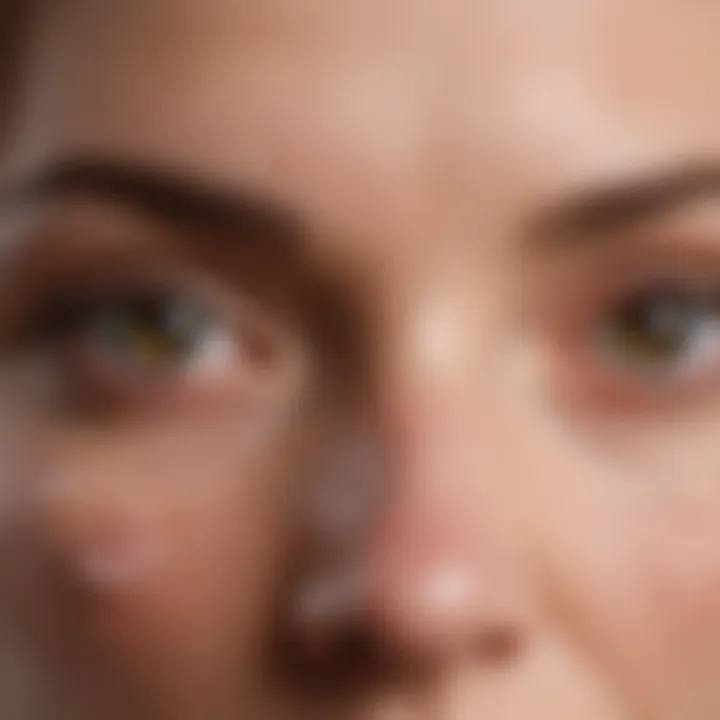
Intro
The delicate skin under our eyes often betrays our age, lifestyle, or perhaps an off night’s sleep. Puffy under eyes are a common issue faced by many, regardless of age, and they sometimes cast a shadow over the best of days. When we seek to mask this concern, understanding how to use concealer strategically becomes essential.
Choosing the right concealer is just as vital as applying it correctly. With the market flooded with countless products promising miracle solutions, it can feel like searching for a needle in a haystack. But don't fret; this guide aims to provide insights that demystify the process of selecting the perfect concealer and applying it in a way that truly transforms your appearance.
Achieving a fresh, well-rested look is possible. So, let’s dive into the world of concealer with practical tips and techniques tailored for you, ensuring that your under-eye area shines while puffiness fades away.
Understanding Puffy Under Eyes
Puffy under eyes are a common cosmetic concern, affecting individuals across various age groups. This issue often arises from a combination of anatomical factors, lifestyle choices, and other external influences. Understanding puffy eyes is crucial because it not only addresses the aesthetic aspect but also delves into underlying causes that may need attention. We often face days when our eyes look like they've just had a rough time, and that's where concealer becomes our best friend.
Anatomy of the Eye Area
The eye area is delicate and intricate, composed of thin skin that can easily show signs of wear and tear. The layers of tissue surrounding the eyes are naturally prone to swelling due to fluid retention and fat deposits. This anatomical structure plays a pivotal role in how puffiness manifests and affects our overall appearance.
The orbicularis oculi, the muscle around the eye, is also affected by age and can contribute to puffiness. As the skin loses elasticity over time, the appearance of bags can be more pronounced, emphasizing the importance of a tailored approach to makeup application. Overall, knowing the makeup of our eye area can guide us in selecting products and techniques that not only minimize puffiness but also enhance our facial aesthetics.
Common Causes of Puffiness
The phenomenon of puffy under eyes can stem from a variety of factors, each playing a unique role in how we appear day-to-day. Understanding these causes is half the battle in managing and concealing them effectively.
Genetic Factors
Some people are simply more prone to puffiness due to their genetics. Certain familial traits can lead to larger fat pads or looser skin under the eyes, which can exacerbate the appearance of bags. This disposition makes it a significant consideration when discussing solutions like concealer. Though you can’t change your genetics, recognizing this aspect helps one understand that achieving a smooth under eye might take a bit more effort for some than others.
This brings the advantage of customized makeup strategies; individuals can explore targeted products specifically designed for those with a genetic tendency towards puffiness.
Lifestyle Choices
Lifestyle choices wield a powerful influence over the appearance of puffiness around the eyes. Factors like diet, exercise, and sleep patterns contribute significantly. For instance, consuming too much salt may lead to water retention, which can further accentuate under-eye bags. Likewise, inadequate sleep often plays its role—puffiness can result from our bodies' struggle to recover during rest.
In this article's context, lifestyle adjustments are thus a practical solution to incorporate alongside makeup techniques. Understanding how our choices impact our appearance provides us an opportunity to improve both our skin’s health and our makeup application processes.
Allergies and Inflammation
Puffiness can also arise from allergies and inflammatory responses. When individuals suffer from allergies, the body releases histamines that can cause swelling and redness. This can often lead to a puffy look under the eyes. It's a crucial point to consider, especially when figuring out your powerhouse concealer routine.
Concealing such puffiness often requires a slightly different shade or texture to mask the redness effectively, making a well-informed product choice key. The advantage of recognizing allergic reactions can lead one to choose hypoallergenic products or the right color correctors to negate the swelling.
Age-Related Changes
Lastly, age-related changes are something we can't escape. As we grow older, the skin around the eyes naturally loses elasticity and fat redistribution occurs. This means that even people who may not have experienced puffiness previously can see changes as they age. The skin thins and can appear more swollen, emphasizing the need for effective concealing techniques.
In the context of this article, awareness of age-related changes is vital for selecting the appropriate formulation and application methods for concealer that cater to mature skin. Aging gracefully is an art, and knowing the ins and outs of makeup can help maintain a fresh and youthful appearance.
"A good concealer does more than just mask flaws; it enhances the natural beauty of the skin while addressing specific concerns like puffiness."
Understanding these elements equips readers with the knowledge to tackle the challenge of puffy under eyes effectively. This foundation allows for better decisions regarding product selection, skin care, and of course, application techniques.
Choosing the Right Concealer
When it comes to tackling puffy under eyes, choosing the right concealer is paramount. This decision can radically change not just the appearance of your under-eye area but also your overall makeup experience. The right concealer enhances not just your look but builds confidence, allowing freedom of expression through makeup. It's a delicate balance—too light, and the puffiness might still show. Too dark, and you could unintentionally highlight the very issue you're trying to conceal.
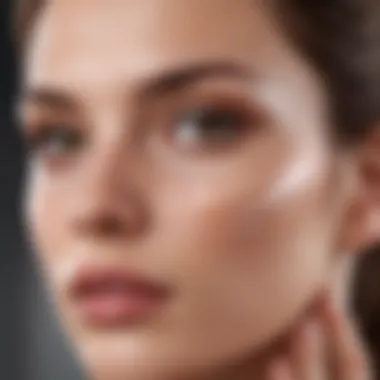
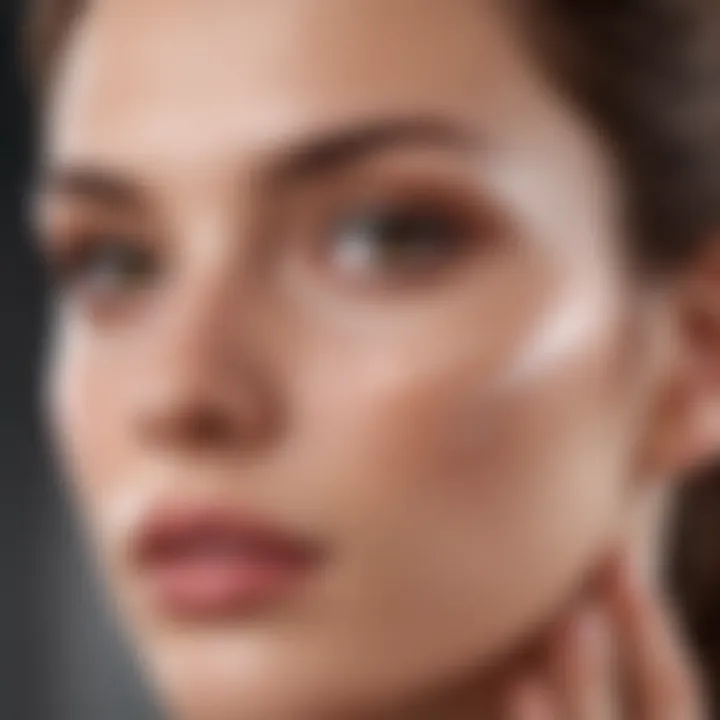
Understanding the various aspects of concealers will equip you with the tools to make the best decision for your beauty routine. Here's a closer look at some key elements to consider:
- Formula: Each type of concealer serves a different purpose and may yield varied effects on your skin's texture.
- Shade: Matching the concealer to your undertone can prevent mismatched tones, ensuring a seamless finish.
- Coverage: Different concealers provide different levels of coverage, from sheer to full. Choosing the right coverage that meets your needs is crucial.
In the long run, taking the time to understand these aspects can yield not just immediate visual benefits but also an increase in your makeup's longevity throughout the day.
Understanding Formula Types
Liquid Concealers
Liquid concealers are widely celebrated for their versatility. They provide a thin, buildable layer of coverage that can adapt well to various skin types. What sets liquid concealers apart is their blendability, making them easy to work with, especially for beginners.
One significant advantage of liquid formulas is that they tend to dry down to a natural finish. This property makes them less likely to settle into fine lines and creases, which is essential when addressing the delicate under-eye area. However, excessive layering or applying them to dry skin can result in a cakey appearance.
Cream Concealers
On the other hand, cream concealers bring their own set of benefits. They generally offer a generous amount of coverage while still maintaining a creamy texture that is easy to blend. Their thicker consistency tends to cover puffiness quite effectively, allowing the user to achieve substantial correction with minimal product.
These concealers might feel heavier on the skin compared to liquid ones, which could become a disadvantage for those prone to oily skin. But for someone looking for fuller coverage that stays put, cream concealers can be a real lifesaver against that annoying under-eye puffiness.
Stick Concealers
Stick concealers take convenience to a whole new level, being portable and easy to apply directly from the tube. Their creamy yet solid texture means they often deliver great coverage, making them suitable for quick touch-ups on the go. The best part? Since they are concentrated, a little goes a long way.
Nevertheless, the stick format sometimes poses challenges in blending. If not warmed up slightly, they can appear more prominent on the skin, particularly if applied without adequate hydration under the eyes. Knowing how and when to use them is key to unlocking their potential.
Identifying Undertones
Understanding undertones is equally essential in the quest for the ideal concealer. Matching your concealer’s undertone to that of your skin can prevent conspicuous patches or odd hues that stand out against your natural coloring.
Warm Undertones
Warm undertones tend to feature hints of yellow, peach, or golden shades. If this reflects your natural skin tone, then using concealers with warm tones will seamlessly blend and cover without creating a stark contrast. These concealers can neutralize the bluish tones often associated with puffy under eyes. They can add a glow and warmth that looks more inviting.
However, opting for warm shades when your skin leans cooler can lead to a mismatched look, so always verify before making a final choice.
Cool Undertones
Conversely, cool undertones exhibit hints of pink, red, or blue. Cool-toned concealers work wonders if they align with your natural coloring. They can also cancel out any yellowish hues that may accentuate your under-eye area, making the skin appear more balanced.
Like warm undertones, sticking with shades that don’t match your undertones can lead to discrepancies and a less flattering finish.
Neutral Undertones
Neutral undertones bridge the gap between warm and cool. This versatility means they can typically wear a variety of shades without risk of clashing. Neutral undertone concealers can be particularly effective for those with mixed undertones, allowing for a natural and harmonious appearance. Yet, finding the correct balance is vital; too warm or too cool can flair up inconsistencies.
Concealer Application Techniques
Mastering the art of applying concealer is pivotal for effectively tackling the issue of puffy under eyes. This section dives into the essential techniques that set the stage for successful concealer application, ensuring that your efforts yield visible results. By focusing on both preparation and application methods, you can significantly enhance the effectiveness of your chosen products. The ultimate goal is to achieve a refreshed, brighter appearance that minimizes the shadows cast by puffiness.
Preparing the Skin
Hydration and Moisturizing
Hydration and moisturizing form the bedrock of any makeup routine, particularly when addressing delicate areas like the under eyes. Well-hydrated skin not only appears plumper but also enhances the application surface for concealers. With the right moisturizer, the skin can absorb moisture, which helps in smoothing out fine lines or dryness that might interfere with an even application.
This step is crucial because dehydrated skin can accentuate puffiness, making it all the more noticeable. A popular choice among experts is to use lightweight gel creams that infuse the skin with moisture without feeling greasy.
By opting for a product rich in hyaluronic acid or glycerin, you prime the under eye area effectively. The unique feature of this hydration is its ability to hold water, giving lasting effects throughout the day and helping the concealer glide on seamlessly. However, it's vital to avoid overly rich creams that might weigh down the skin or contribute to increased puffiness.
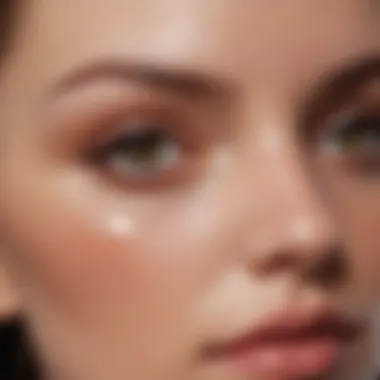

Priming the Under Eye Area
Another critical aspect of preparation is priming the under eye area. A good primer designed for this delicate skin can create a smooth canvas that significantly improves concealer application. It fills in fine lines and pores, making the surface more uniform and allowing the concealer to adhere better. This step can also enhance longevity, as a primer can lock in the concealer and prevent creasing throughout the day.
Most primers for under eyes typically contain light-reflecting particles, which can do wonders in brightening the area. A unique feature of a good primer is its tinted nature, catering to different skin tones to ensure a better blend with concealer. Look for oil-free formulas that won’t clog pores or add extra weight. While beneficial, users must choose wisely because the wrong primer can lead to unwanted shine or cakiness.
Applying Concealer Effectively
Using the Right Tools
The choice of tools can make or break your concealer application. Brushes, sponges, or even fingers each bring a different technique to the table. Brushes allow for precision, and sponges provide an airbrushed effect, while fingers offer warmth that can help emulsify the product into the skin. For a flawless finish, many artists recommend using a damp beauty sponge, as it dials down the product's intensity while ensuring an even application.
It's essential to pay attention to the density of the tool as well; a denser sponge translates to more coverage, while a fluffier one gives a lighter finish. A good hybrid approach might be to spot-apply with a brush before blending with a sponge. However, be cautious; too much product on a sponge can lead to a patchy look.
Layering Techniques
Layering techniques are integral to achieving a smooth, natural look. Often, one coat of concealer isn’t sufficient, especially for hyperpigmentation or shadows caused by puffiness. When applying, start with a small amount to avoid the dreaded cake face. Controlled layering allows for building coverage gradually without overwhelming the under eye area.
Using short, tapping motions tends to work best, as this maintains the hydration underneath and prevents disruption of any base layers. The key characteristic here is to work your way up from sheer to opaque, allowing each layer to settle before the next application. While effective, this method requires a delicate hand—too much product too quickly can result in visible texture, which is something to avoid at all costs.
Blending Methods
Finally, blending methods are where the magic happens. Achieving a seamless transition between your concealer and foundation is paramount. Whether using a patting technique with your sponge or a gentle dabbing motion with your fingers, it's crucial to blend enough to avoid harsh lines. A popular tip among makeup artists is to blend from the outer corners inward, as this helps preserve the coverage where it’s most needed.
The beauty of effective blending lies in its ability to diffuse the product, creating a soft focus effect around the eyes. Nevertheless, caution is warranted, as over-blending can strip away coverage. A well-blended concealer not only conceals but also serves to brighten by reflecting light, which can divert attention away from puffiness.
"The secret to flawless concealer is in the prep; hydrate and prime before you even think of layering the actual product."
In essence, understanding these application techniques will place you leaps and bounds ahead in the pursuit of combatting puffy under eyes.
Enhancing the Result
In the realm of beauty, the final touches can make or break a look. When it comes to disguising puffy under eyes, enhancing the result of your concealer application becomes crucial. This part of the process involves ensuring that your concealer not only masks the puffiness but also integrates well with the surrounding makeup and overall aesthetic.
Setting your concealer properly is vital. An ill-set concealer can easily crease or fade throughout the day, leaving you with unsightly telltales instead of the smooth finish you intended. The right setting powder not only prolongs the wear but enhances the makeup beneath it. Furthermore, consider the overall makeup look you want to achieve; your choice of highlighting, contouring, and eye makeup can dramatically alter the end result.
By employing these enhancing techniques, you can achieve a more polished appearance that feels cohesive and well thought-out. Let's break down the specifics that form the backbone of this enhancement journey.
Setting the Concealer
Choosing the Right Setting Powder
When it comes to setting your concealer, the choice of powder can be a game changer. A finely milled setting powder can feel like a soft breeze on the skin, which is exactly what you want to avoid that heavy and cakey look. Many opt for translucent powders. They tend to work well for a variety of skin tones without altering your concealer shade, keeping your work intact.
A key characteristic of a good setting powder is its oil control. Powders that thrive in absorbing excess oil prevent that dreaded shine while offering a velvety finish. This is especially beneficial when dealing with the delicate under-eye area, which can easily give away any misstep.
A unique feature of this choice is how quickly it sets. Using a lightweight powder that sets in mere moments can save you time during busy mornings while ensuring your makeup lasts longer. However, remember that applying too much can lead to a dry appearance, especially if your skin is more mature or struggles with hydration.
Application Techniques for Longevity
Once you've chosen your setting powder, the way you apply it makes a world of difference. Dab the powder gently with a damp sponge or a soft brush to ensure an even distribution. This technique not only helps the product meld with the concealer but also prevents creasing.
The key characteristic of this application method is its ability to maintain the liveliness of the skin. By tapping rather than rubbing, you preserve the under-eye area’s natural smoothness.
Another advantage is the potential for layering. If you find that your concealer sinks into fine lines, adding another light layer of powder can help. However, moderation is key; over-layering can easily lead to a chalky look. So, tread lightly and aim for just enough to ensure longevity without going overboard.
Additional Makeup Tips
Highlighting and Contouring
Highlighting and contouring play a fundamental role in adding dimension to your face. By drawing attention away from puffy areas, these techniques can create a more balanced look. When executed properly, they can amplify the natural features of your face while softening any unwanted puffiness.
A significant characteristic of this method is its versatility. Highlighting can bring forward the cheekbones and lift the overall appearance of the eyes, while contouring can subtly define the jawline. Both these strategies help redirect focus, making the eyes appear less puffy.
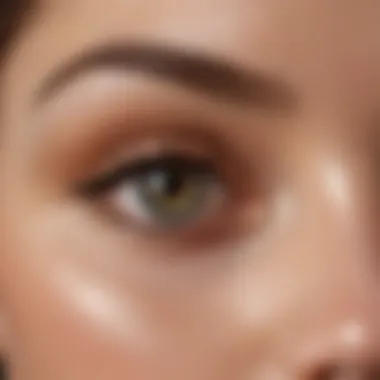
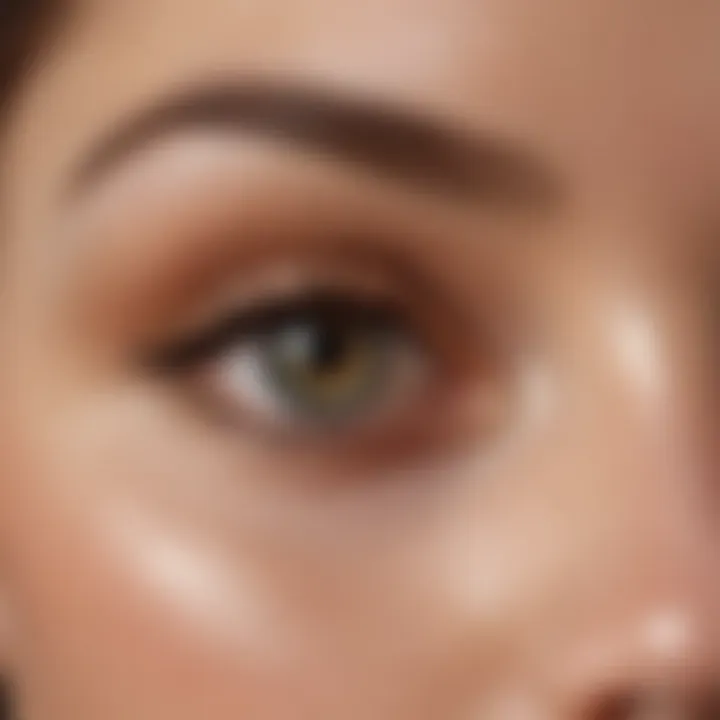
An advantage of incorporating these techniques is the heightened three-dimensional effect they provide. Nevertheless, improper application can lead to harsh lines, so blending is crucial in ensuring a seamless look.
Eye Makeup Considerations
Eye makeup is the final frontier in this enhancement journey. The colors and styles you choose for your eyes can either accentuate or oh-so subtly hide the under-eye puffiness. Soft, neutral palettes can create a calming effect. Adding mascara can lift the lashes, drawing attention upwards.
An important trait of eye makeup is its capacity to create visual balance. Light shimmer shadows can brighten the eyelids, while a darker liner can bring depth without drawing attention to puffiness.
Remember that the unique feature of eye makeup is its ability to play off your overall look. Therefore, adjusting colors based on your wardrobe can harmonize your appearance. The downside lies in overdoing it; too much eye makeup can sometimes emphasize imperfections, so moderation and careful selection are key.
Common Mistakes to Avoid
In the world of makeup, even the smallest missteps can transform a flawless look into a less-than-ideal outcome. When it comes to addressing puffy under eyes, avoiding certain mistakes is crucial to achieving that coveted smooth and bright appearance. Misunderstandings about concealer application can lead to emphasizing imperfections rather than concealing them. Learning about and sidestepping these common pitfalls will not only enhance your makeup skills but also help promote a more polished and refined visage. Let's take a closer look at some significant mistakes.
Over-application of Concealer
A common blunder among many when dealing with puffy under eyes is the over-application of concealer. In the desire to mask puffiness, there's a tendency to slather on more product, believing that more will yield better results. However, this tactic can backfire—rather than hiding those under-eye bags, over-applying can lead to a cake-like effect, which often magnifies the issue at hand.
The application of too much concealer can actually create fine lines and draw attention to textures in the skin, particularly since the skin around the eyes is quite delicate. Just like in painting, too many layers can muddle the artwork. Therefore, it's essential to adopt a more moderate approach. A light touch with a well-blended application can work wonders. Start with a small amount, and gradually layer if necessary, ensuring you remain within a manageable range.
Ignoring Undertone Compatibility
Ignoring undertone compatibility is another rookie error that can derail your concealer application. Each person has a unique undertone—warm, cool, or neutral—affecting how colors interact with the skin. Choosing a concealer that doesn't align with your undertone can lead to mismatched shades that become glaringly apparent.
For example, if you have warm undertones and opt for a cool-toned concealer, the result may be an ashy appearance, which does nothing to brighten the under-eye area. Conversely, cool-toned individuals who go for warm concealers might find their makeup appears orange or yellowish. To navigate this, it’s wise to test concealers under natural light and on your jawline before settling on a shade. This simple step can lead to a world of difference, ensuring your makeup remains seamless and harmonious.
"The right shade can transform not just your look, but your confidence—don't settle for less!"
Neglecting Skin Prep
Skipping the all-important step of skin prep is akin to building a house on a shaky foundation. The under-eye region requires special attention before any makeup is applied. Neglecting proper skin preparation can undermine the overall effectiveness of your concealer. Factors like hydration and moisture are key.
If the skin is dry or dehydrated, concealer won't adhere properly and can create a patchy effect. Moreover, without adequate moisturizing, any fine lines or textures can become pronounced, defeating the purpose of applying concealer altogether. Utilize a hydrating eye cream or serum specifically formulated for the under-eye area to give your skin a drink. Beyond just hydration, employing a primer can also help in creating a smooth surface for the concealer, fostering better adhesion and long-lasting results.
In summary, the journey to mastering concealer application for puffy under eyes involves understanding the nuances of application as well as avoiding common mistakes. By steering clear of over-application, ensuring the right undertones, and never slacking on skin prep, you'll pave the way to a more polished and sophisticated look.
Long-term Solutions for Puffy Eyes
Addressing puffy under eyes goes beyond quick fixes like concealer. Understanding long-term solutions is vital as they aim to tackle the root causes of puffiness rather than merely concealing the issue. The focus here is on lifestyle adjustments, skincare routines, and natural remedies that can significantly reduce puffiness over time. Not only do these methods contribute to a healthier appearance, but they also foster an understanding of your body and how it responds to various external factors.
Lifestyle Adjustments
Sleep Hygiene
One critical aspect of sleep hygiene is establishing a consistent sleeping pattern. When you stick to a regular sleep schedule, it helps regulate your body’s internal clock. This regularity can minimize bags and puffiness as adequate sleep plays a major role in maintaining the delicate balance of fluids around the eyes. The key characteristic of sleep hygiene is its holistic approach—it's not just about quantity but also quality. Good sleep hygiene promotes deeper, more restorative sleep, leading to fresher, brighter eyes. A unique feature of sleep hygiene is its emphasis on creating a serene sleep environment, free from disturbances like blue light from screens or loud noises. The advantages of prioritizing sleep hygiene are clear: not only do you combat puffiness, but you also enhance your overall well-being. However, adjusting sleep habits can be challenging initially, often requiring discipline and persistence.
Dietary Considerations
Dietary choices play a substantial role in how our bodies retain or shed water. Reducing sodium intake is one effective strategy as high salt consumption leads to water retention, which can exacerbate puffiness around the eyes. The key characteristic of these dietary adjustments is their immediate effect; you can often notice changes in appearance when you shift your eating habits. Additionally, hydration is equally essential. Drinking ample amounts of water helps flush out toxins and minimizes retention. When your body is well-hydrated, it’s less likely to hold onto excess fluid, which translates into reduced under-eye puffiness. A unique feature to note is the integration of anti-inflammatory foods like berries, leafy greens, and fish rich in omega-3 fatty acids into your diet. These choices may not only be beneficial but can make you feel better overall. The downside? Changing a long-standing diet can be challenging for many, requiring time and dedication to see results.
Skincare Routines
Eye Creams and Serums
Incorporating eye creams and serums that target puffiness can also be seen as an effective long-term approach. The specific aspect of these products is that they are often formulated with active ingredients like caffeine or hyaluronic acid, which can help reduce swelling and promote hydration. The key characteristic of eye creams is their lightweight formulas, specially designed for the delicate skin around the eyes. Many find these products a popular choice in their skincare routine due to their targeted action and ease of use. A unique feature is the cooling sensation provided by many of these creams, which can also act as a temporary remedy for puffiness. However, while eye creams can produce noticeable results, it’s important to remember that these changes are most effective when used consistently over time; they aren’t instant cures.
Regular Facial Treatments
Regular facial treatments can be another helpful avenue for addressing puffiness long-term. These treatments often include facials that focus on lymphatic drainage techniques which stimulate circulation and help reduce swelling around the eyes. A key characteristic of regular facial treatments is their personalized nature; a professional can tailor the treatment to individual skin types and concerns. They also highlight the importance of self-care and indulgence in one’s routine. A unique feature is the variety of options available—from soothing masks to rejuvenating peels—allowing individuals to pick what suits them best. The advantages include not only a decrease in puffiness but an overall enhanced complexion. On the flip side, booking regular treatments can become costly, and finding the right aesthetician might require some trial and error.
Overall, adopting long-term solutions for puffy eyes transcends quick fixes. By considering lifestyle adjustments, dietary choices, and skincare routines, individuals can cultivate approaches that not only minimize puffiness but also enhance their overall well-being.







